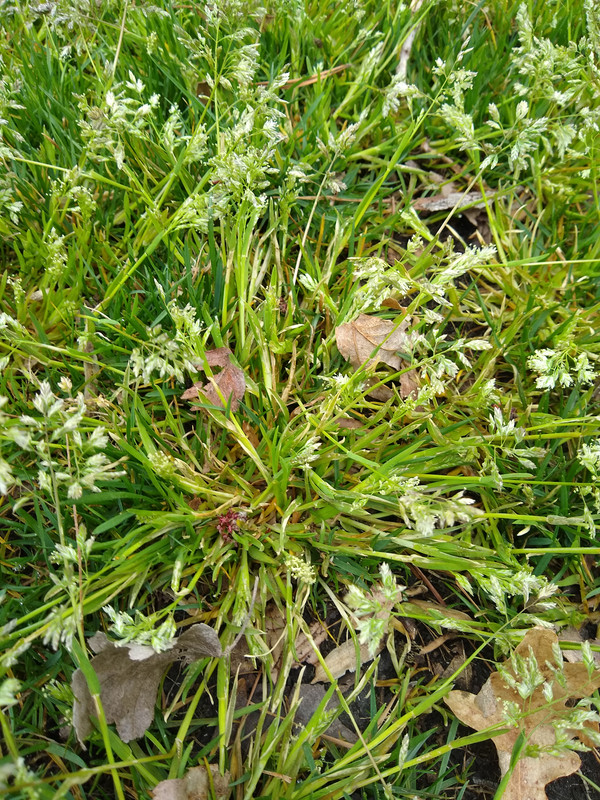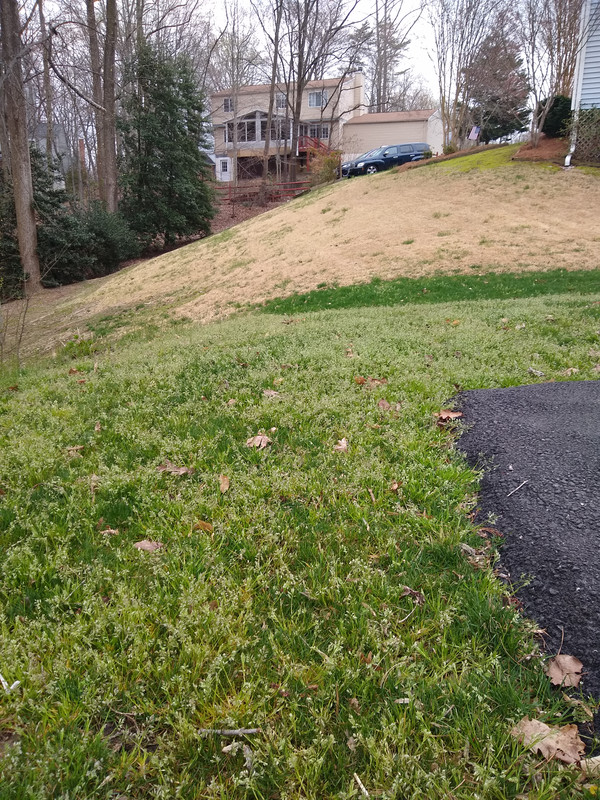Good morning everyone,
I have been having the struggles with getting a main section of my lawn to grow after seeding. I seeded last spring and the crab grass eventually took it over. So I started over (by seeding again) in the fall after aerating, had the TTTF coming up fairly well, and cut and fertilized a few times before winter.
Now I have a huge problem with (what I believe) is annual bluegrass, seen below. It looks like the pictures of annual bluegrass I've seen and meets the characteristics (bunched root, lighter cooler, seeds). I've read a lot online how to make sure it doesn't live (infrequent heavy watering, having a fully established yard, etc.). But what should I do right now? I'm in zone 7b, I'm about to start seeding some bare spots I have in other sections of the yard, but I can't exactly overseed this area, the annual bluegrass is so thick.
I've read this weed often dies in the heat of summer, but it going to leave a HUGE bald spot once it dies. Therefore, should I kill the whole section now (tarp over it, round up, ?)and reseed in a few weeks? Should I try to pull as much of it by hand as possible and seed in the spots I pull it? Should I try tenacity on it right now and try to reseed in a few weeks?
Just getting frustrated because weeds are just killing any gains I makes. I can't really lay down a pre-emergent since I'm trying to seed. I'm at the point when I'm going to spend the 4-5 hours ripping up each stalk of this week and then reseeding each individual bare spot, but I thought I would check with y'all to see if there's something you would recommend.
Any help or thoughts would be very helpful. Thanks!


I have been having the struggles with getting a main section of my lawn to grow after seeding. I seeded last spring and the crab grass eventually took it over. So I started over (by seeding again) in the fall after aerating, had the TTTF coming up fairly well, and cut and fertilized a few times before winter.
Now I have a huge problem with (what I believe) is annual bluegrass, seen below. It looks like the pictures of annual bluegrass I've seen and meets the characteristics (bunched root, lighter cooler, seeds). I've read a lot online how to make sure it doesn't live (infrequent heavy watering, having a fully established yard, etc.). But what should I do right now? I'm in zone 7b, I'm about to start seeding some bare spots I have in other sections of the yard, but I can't exactly overseed this area, the annual bluegrass is so thick.
I've read this weed often dies in the heat of summer, but it going to leave a HUGE bald spot once it dies. Therefore, should I kill the whole section now (tarp over it, round up, ?)and reseed in a few weeks? Should I try to pull as much of it by hand as possible and seed in the spots I pull it? Should I try tenacity on it right now and try to reseed in a few weeks?
Just getting frustrated because weeds are just killing any gains I makes. I can't really lay down a pre-emergent since I'm trying to seed. I'm at the point when I'm going to spend the 4-5 hours ripping up each stalk of this week and then reseeding each individual bare spot, but I thought I would check with y'all to see if there's something you would recommend.
Any help or thoughts would be very helpful. Thanks!






